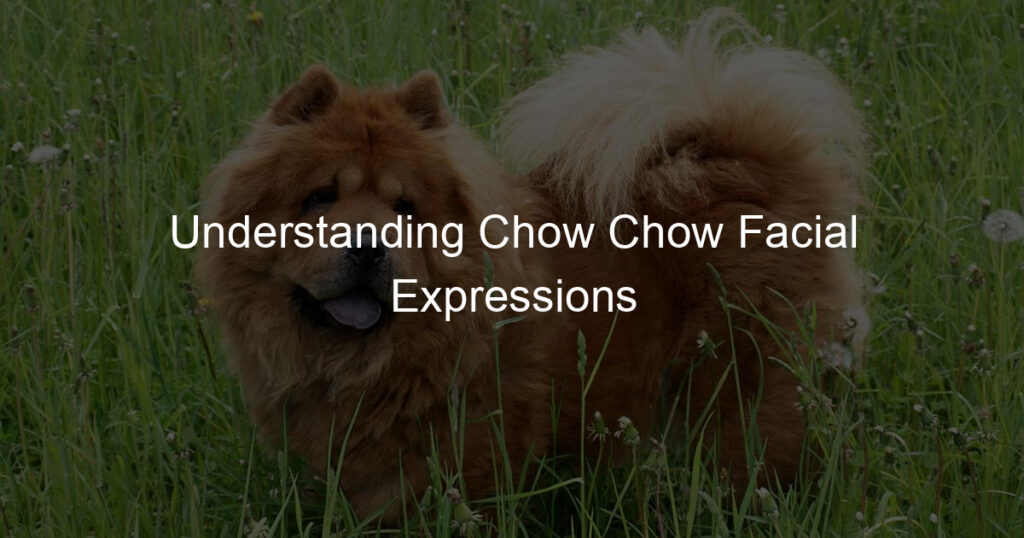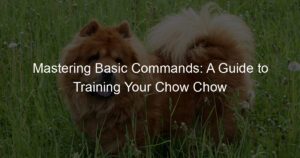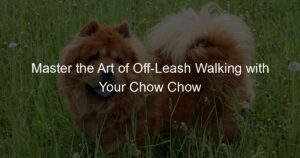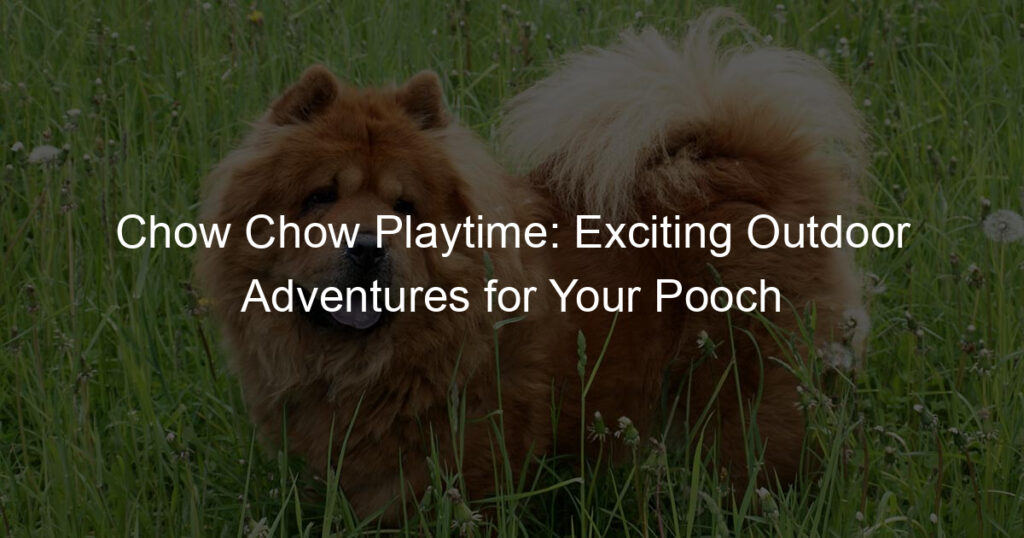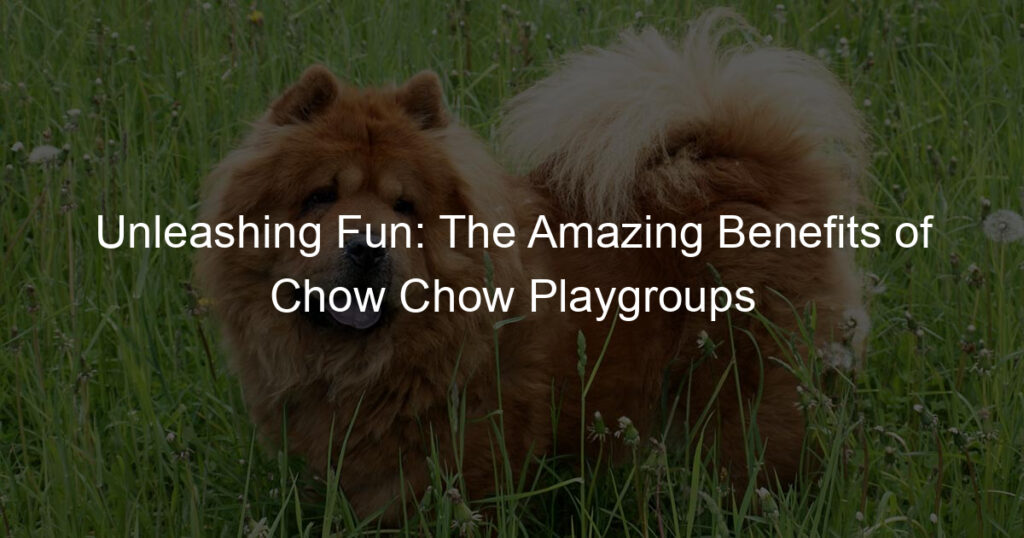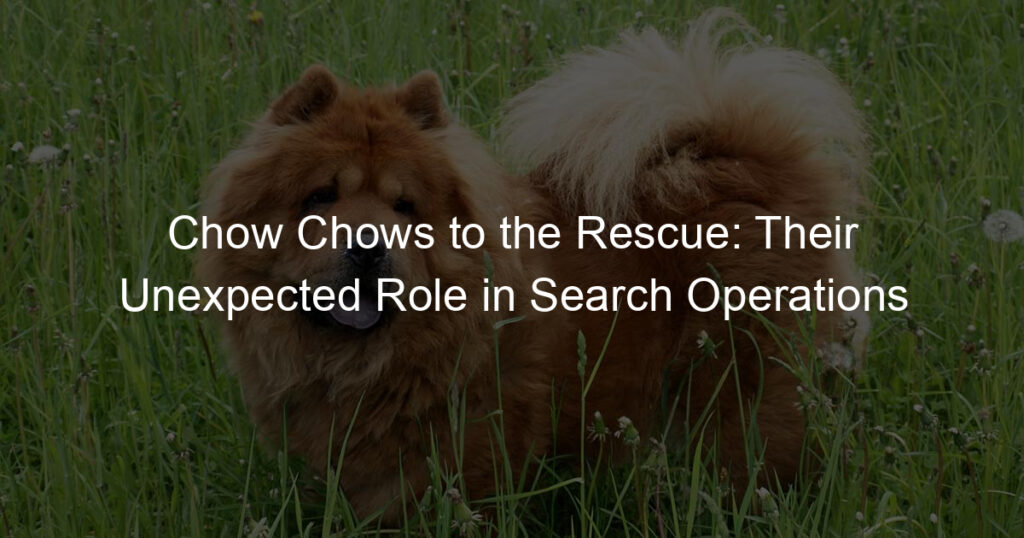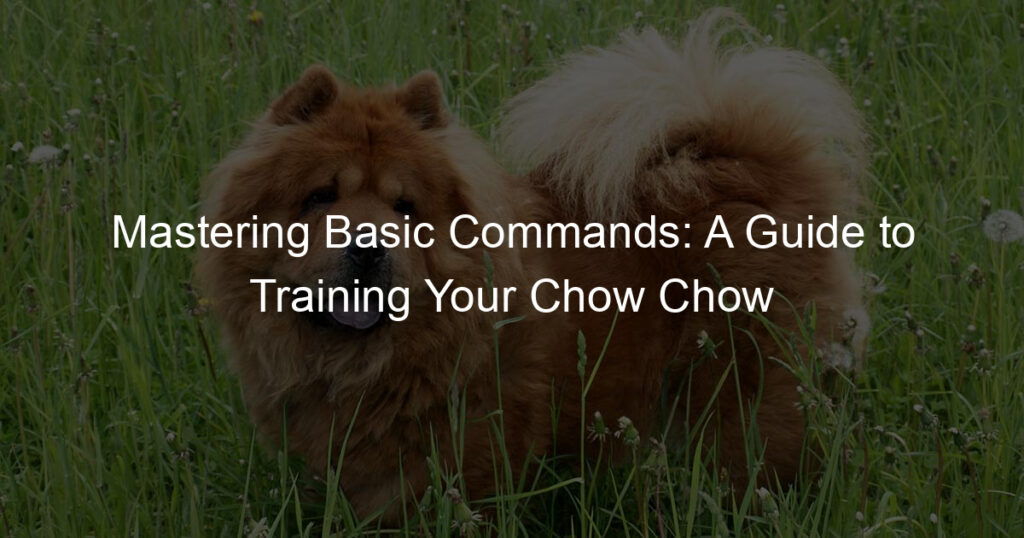Introduction: Understanding Chow Chow Expressions
As a Chow Chow lover, one of the most fascinating aspects of these unique dogs is their expressive nature. Understanding their expressions and behavior can significantly enhance the bond between you and your furry friend. This article aims to provide a comprehensive guide to understanding Chow Chow expressions, their behavior, and the characteristics that make this breed so special.
- Importance of understanding Chow Chow behavior
- Overview of Chow Chow breed characteristics
Understanding your Chow Chow’s behavior is crucial for a harmonious relationship. It allows you to interpret their needs, feelings, and health conditions accurately. For instance, a Chow Chow may express discomfort through certain behaviors, such as excessive barking or restlessness. By recognizing these signs, you can promptly address any potential issues, ensuring your pet’s well-being. Furthermore, understanding their behavior can also help in training and socializing your Chow Chow, making them a well-behaved and friendly companion.
The Chow Chow breed is known for its distinctive lion-like appearance and aloof demeanor. They are medium-sized dogs with a sturdy build, characterized by a dense double coat that can be either smooth or rough. Their most striking feature is their blue-black tongue, a trait unique to this breed. Personality-wise, Chow Chows are typically reserved and independent, yet loyal to their families. They are intelligent and can be quite stubborn, which requires consistent and patient training. Despite their aloofness, Chow Chows are known to form deep bonds with their owners, making them a truly special breed to have.
In the following sections, we will delve deeper into the body language, facial cues, and specific behaviors of Chow Chows. By the end of this article, you will have a better understanding of your Chow Chow’s expressions and how to interpret them, strengthening the bond you share with your furry friend.
Decoding Chow Chow Body Language
Understanding the body language of your Chow Chow is an essential part of building a strong and healthy relationship with your furry friend. This section will guide you on how to decode your Chow Chow’s body language and understand their moods better.
Understanding Chow Chow Moods
Just like humans, Chow Chows have a range of emotions and moods that they express through their body language. Here’s how you can read them:
- Reading Chow Chow emotions through body language
- Examples of different moods and corresponding body language
Chow Chows use their entire body to communicate their feelings. For example, a relaxed Chow Chow will have a loose, wiggly body and a wagging tail. On the other hand, a stressed or scared Chow Chow may have a stiff body, tucked tail, and might even show teeth. Paying attention to these signs can help you understand your pet’s emotional state and respond appropriately.
Let’s take a look at some common moods and their corresponding body language:
| Mood | Body Language |
|---|---|
| Happy/Relaxed | Loose body, wagging tail, relaxed ears |
| Anxious | Stiff body, tucked tail, ears back |
| Aggressive | Raised hackles, bared teeth, intense stare |
| Fearful | Low body posture, ears flat, may whimper or try to escape |
Remember, understanding your Chow Chow’s body language is a skill that develops over time. The more you observe and interact with your pet, the better you’ll become at decoding their moods and emotions. Always approach your Chow Chow with love and patience, and you’ll be rewarded with a loyal and loving companion.
Chow Chow Communication
Understanding the unique communication style of the Chow Chow breed can significantly enhance your bond with your pet. Let’s delve into the common signals they use and what they mean.
- Common signals and what they mean
- Case study: How understanding Chow Chow communication can improve your relationship with your pet
Chow Chows are known for their distinctive communication signals. Here are some common ones:
| Signal | Meaning |
|---|---|
| Tail Wagging | This usually indicates happiness or excitement. However, rapid tail wagging might signify agitation. |
| Growling | Growling is a warning signal. It might mean your Chow Chow is uncomfortable or feels threatened. |
| Whining | Whining often indicates that your Chow Chow is in distress or needs attention. |
It’s important to note that every Chow Chow is unique, and these signals might vary slightly. Always pay attention to the context and other body language cues.
Let’s look at a case study involving a Chow Chow named Bella. Bella’s owner, John, noticed that she often growled when he tried to pet her. Initially, he thought Bella was being aggressive. However, after learning about Chow Chow communication, he realized that Bella was merely uncomfortable with the way he was petting her.
John changed his approach, and Bella’s growling stopped. This example illustrates how understanding your Chow Chow’s communication can significantly improve your relationship with them. It can help you meet their needs better and ensure they feel safe and comfortable.
In conclusion, understanding Chow Chow communication is crucial for a harmonious relationship with your pet. It allows you to understand their needs and emotions better, leading to a happier and healthier pet.
Chow Chow Facial Cues
Understanding the facial cues of your Chow Chow is a crucial part of building a strong bond with your pet. It helps you to understand their needs, moods, and behaviors better. Let’s delve into the world of Chow Chow facial expressions.
Interpreting Facial Expressions
Interpreting the facial expressions of a Chow Chow can be a bit challenging due to their unique facial structure. However, with careful observation and understanding, you can learn to interpret their facial cues accurately.
- Key takeaways for interpreting Chow Chow facial expressions
- Examples of common facial cues and their meanings
Chow Chows use their entire face to communicate, including their eyes, ears, and mouth. A relaxed Chow Chow will have soft eyes, relaxed ears, and a slightly open mouth. On the other hand, a stressed or anxious Chow Chow may have wide eyes, pinned back ears, and a tightly closed mouth. Remember, each Chow Chow is unique and may express themselves differently.
| Facial Cue | Meaning |
|---|---|
| Soft eyes and relaxed ears | Contentment, relaxation |
| Wide eyes and pinned back ears | Stress, anxiety |
| Tightly closed mouth | Agitation, discomfort |
| Open mouth and wagging tongue | Excitement, playfulness |
These are just a few examples of common facial cues in Chow Chows. Remember, it’s essential to observe your pet in different situations to understand their unique ways of communication.
Understanding your Chow Chow’s facial cues is a journey of discovery. It strengthens the bond between you and your pet and ensures their well-being. So, keep observing, keep learning, and enjoy the wonderful companionship of your Chow Chow.
Chow Chow Behavior Interpretation
Understanding the behavior of your Chow Chow can be a rewarding experience. It allows you to connect with your pet on a deeper level and ensure their well-being. However, it’s not always easy to interpret their facial expressions and behaviors. Let’s debunk some common misconceptions and provide practical tips for accurate behavior interpretation.
- Common misconceptions about Chow Chow facial expressions
- Practical tips for accurate behavior interpretation
- Observe their body language: A wagging tail or relaxed posture often indicates happiness, while a stiff posture or tucked tail can signal fear or anxiety.
- Listen to their vocalizations: Chow Chows can make a variety of sounds, from barks to growls to whines. Each sound can convey a different emotion or need.
- Pay attention to their eyes: Chow Chows have deep-set eyes that can express a range of emotions. Wide-open eyes can indicate excitement or fear, while half-closed eyes often signal relaxation or contentment.
One of the most common misconceptions about Chow Chows is that they are aloof or unfriendly due to their often serious facial expressions. However, this is far from the truth. Chow Chows are known to be loyal and protective of their families. Their facial expressions are often misinterpreted due to their unique facial structure, including deep-set eyes and a broad, flat skull. It’s important to remember that a Chow Chow’s facial expression does not always reflect their mood or intentions.
Interpreting your Chow Chow’s behavior accurately requires patience and observation. Here are some practical tips:
Understanding your Chow Chow’s behavior is a journey that requires time and patience. But with careful observation and a little knowledge, you can learn to interpret their behavior accurately and deepen your bond with your furry friend.
Chow Chow Breed Behavior
Understanding the behavior of the Chow Chow breed is essential for every owner. This breed is known for its unique characteristics, which significantly influence its behavior. By understanding these behaviors, you can enhance your training effectiveness and build a stronger bond with your Chow Chow.
Understanding Breed-Specific Behavior
Every breed of dog has its unique behavioral traits, and the Chow Chow is no exception. To fully understand and appreciate your Chow Chow, it’s important to delve into the specifics of their breed behavior.
- How breed characteristics influence behavior
- Case study: How understanding breed behavior can enhance training effectiveness
Chow Chows are known for their aloof and independent nature. They are not overly affectionate, but they are extremely loyal to their families. This breed is also known for its stubbornness, which can make training a challenge. However, with patience and consistency, you can effectively train your Chow Chow. Understanding these breed characteristics can help you tailor your training methods to suit your Chow Chow’s unique needs. Learn more about Chow Chow characteristics here.
A case study involving a Chow Chow named Max demonstrated the importance of understanding breed behavior in training. Max was initially stubborn and unresponsive to traditional training methods. However, once his owner started using methods tailored to Chow Chows’ independent and aloof nature, Max showed significant improvement. This case study highlights the importance of understanding your Chow Chow’s breed behavior for effective training.
In conclusion, understanding your Chow Chow’s breed behavior is crucial for effective training and building a strong bond. By taking the time to understand your Chow Chow’s unique characteristics, you can create a training plan that works for both of you.
Conclusion: The Importance of Understanding Your Chow Chow
As we reach the end of our exploration into the world of Chow Chows, it’s clear that understanding your Chow Chow’s expressions and behavior is not just beneficial, but crucial. This understanding allows you to communicate effectively with your furry friend, ensuring a strong bond and a happy, healthy pet.
- Recap of key points from the article:
- Final thoughts on the importance of understanding Chow Chow expressions and behavior:
We began our journey by learning about the unique expressions of the Chow Chow breed in the Introduction: Understanding Chow Chow Expressions section. We then delved into the specifics of their body language in the Decoding Chow Chow Body Language section, followed by an in-depth look at their facial cues in the Chow Chow Facial Cues section. Lastly, we explored the typical behavior of this breed in the Chow Chow Breed Behavior section.
Understanding your Chow Chow’s expressions and behavior is not just about training or obedience, it’s about building a relationship based on mutual respect and love. By understanding their unique ways of communication, you can ensure their needs are met, their fears are addressed, and their happiness is prioritized. This understanding is the foundation of a strong, lasting bond between you and your Chow Chow.
Remember, every Chow Chow is unique. While we’ve provided general insights and guidelines, your Chow Chow may exhibit behaviors and expressions that are unique to them. Always approach your Chow Chow with patience, love, and a willingness to learn. In doing so, you’ll not only enhance your relationship with your pet but also enrich your own life with the joy and companionship that a well-understood Chow Chow can provide.
Thank you for joining us on this journey of understanding the Chow Chow breed. We hope this guide has been informative and helpful in enhancing your relationship with your beloved Chow Chow.

